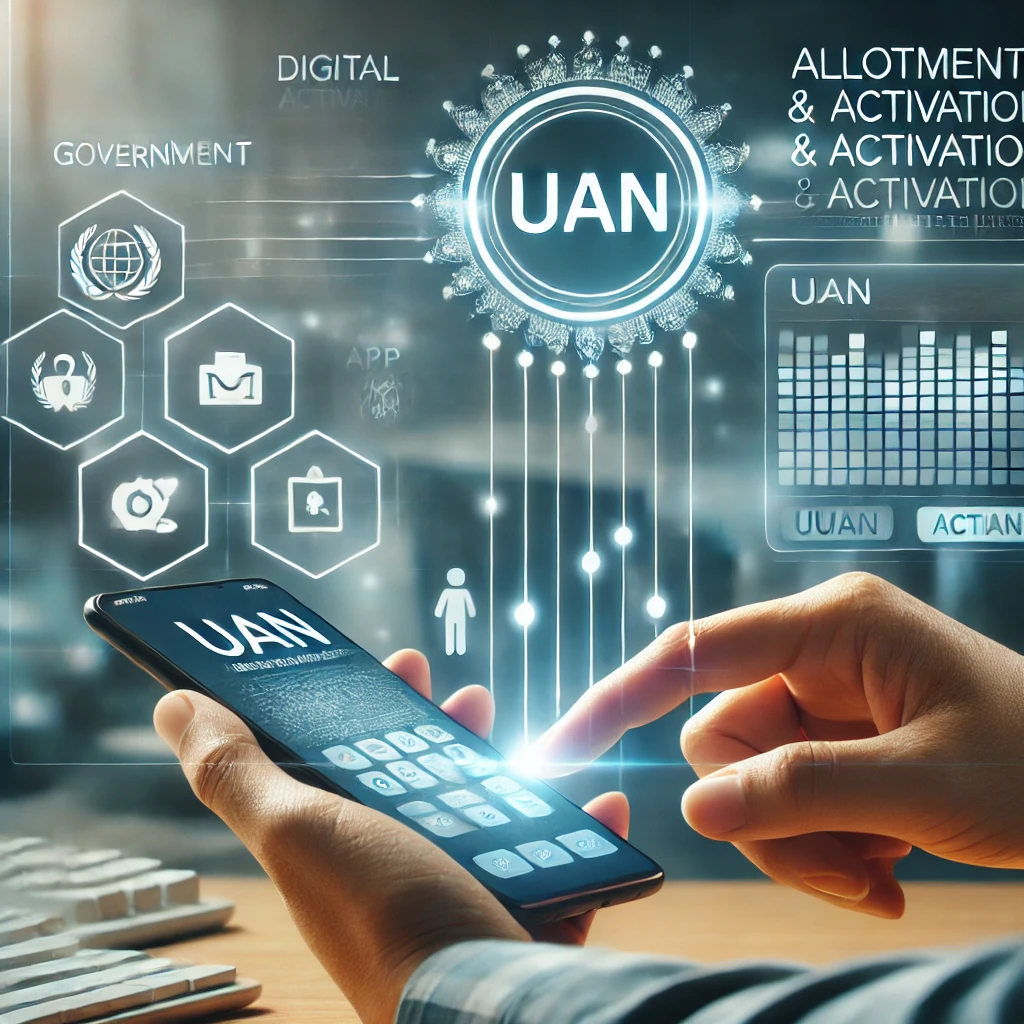Summary of the Notification:
The Government of India, through the Ministry of Labour and Employment, has introduced a digital, Aadhaar-based process for the allotment and activation of the Universal Account Number (UAN) via the UMANG App using Face Authentication Technology (FAT). This initiative aims to improve security, transparency, and efficiency in accessing Employees’ Provident Fund Organization (EPFO) services-empowering both employees and employers through a seamless, paperless process.
Introduction
As part of its Digital India mission, the Government has taken a major step by integrating UAN services into the UMANG (Unified Mobile Application for New-age Governance) App, enabled with Face Authentication Technology. This eliminates the need for physical forms, HR involvement in UAN generation, or office visits—allowing individuals to independently generate or activate their UAN, enhancing compliance and accessibility.
What is UAN and Why is it Important?
The Universal Account Number (UAN) is a 12-digit identifier assigned to every employee enrolled under the Employees Provident Fund (EPF). It connects multiple PF account numbers (Member IDs) from various employers under one umbrella, simplifying fund tracking and management.
Without an active UAN, employees:
- Cannot check or withdraw PF balances
- Experience delays in PF transfer during job switches
- Face issues with KYC (Know Your Customer) updates
Hence, timely UAN generation and activation is critical for hassle-free access to EPFO services.
Key Features of the New UAN Services via UMANG App
UAN Allotment for New Users:
- For employees who are new to the EPFO system and don’t yet have a UAN.
- Steps:
- Enter Aadhaar and mobile number
- Give consent for Aadhaar validation
- Complete OTP verification
- Use Aadhaar Face RD App for face scan
- UAN is generated and sent via SMS
UAN Activation for Existing Users:
- For employees who already have a UAN but haven’t activated it.
- Requires:
- UAN, Aadhaar, and linked mobile number.
- Face authentication and OTP verification
- A temporary password and photo confirmation are sent upon activation
Face Authentication for Already Activated UANs:
- Allows biometric-based updates to EPFO records
- Improves database accuracy and identity verification
- Supports a secure and user-friendly experience
Examples to Illustrate Use Cases
- Example 1: A fresh graduate joining a tech startup can instantly generate a UAN using the UMANG App with a face scan-no HR involvement required.
- Example 2: A contractual worker with a dormant UAN from a previous job can now activate it independently using Aadhaar and facial recognition.
Implications for Employees and Employers
For Employees:
- Self-service UAN activation without visiting EPFO offices
- Secure and fast access to PF services via Aadhaar and biometric verification
- No physical KYC documents or dependency on employers
- Streamlined job transition and faster EPF onboarding
For Employers:
- Reduced paperwork and administrative overhead
- Faster onboarding of employees into the EPFO system
- Promotes digital compliance and improves EPF record accuracy
Compliance Tips for Employers
- Encourage Aadhaar linking for all new hires
- Ensure employees have Aadhaar-linked mobile numbers
- Train HR staff to assist employees in using the UMANG App and Aadhaar Face RD App
- Keep your organization aligned with EPFO’s latest digital policies
Call-to-Action (CTA)
Need assistance with EPFO compliance or implementing the UAN digital activation process in your organization?
Get in touch with Key4Comply – Labour Law Consultants, your trusted experts in:
- EPFO process compliance
- UAN activation protocols
- Labour audits and digital HR implementation
Stay compliant, digital, and efficient with our tailored support!
Conclusion
The introduction of Face Authentication for UAN allotment and activation via UMANG App is a game-changing reform in India’s labour law ecosystem. It reflects the Government’s commitment to digital governance and self-empowered employee services, making PF access more secure, transparent, and convenient.
For businesses and employees alike, adapting to this digitized process is key to remaining compliant and future-ready.

